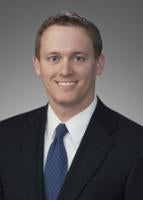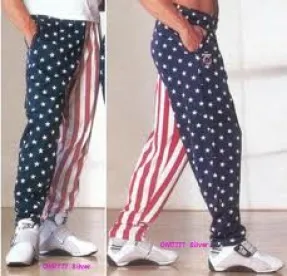In Mayo Collaborative Services v. Prometheus Laboratories, Inc., the Supreme Court of the United States held unanimously that claims directed to a method of altering a drug dose based on levels of the drug’s metabolite are ineligible for patent protection under section 101 of the patent statute. In doing so, the Court departed from its long-standing precedent that section 101 of the patent statute should be interpreted broadly in favor of patent eligibility. The Supreme Court further appears to have conflated 35 U.S.C. §§ 102, which requires patent claims to be novel, and 103, requiring claims to be nonobvious, into the patent eligibility analysis under § 101.
Background
Prometheus is the exclusive licensee of U.S. Patent Nos. 6,355,623 and 6,680,302 directed to processes for using thiopurine drugs to treat autoimmune diseases such as Crohn’s disease and ulcerative colitis. Upon ingestion, thiopurines are metabolized and introduced into the bloodstream. Because individual patients metabolize thiopurines differently, it is difficult for doctors to determine whether a particular dosage is too high—risking harmful side effects—or too low—and ineffective—for a particular patient. The patent claims at issue set forth processes which identify correlations between thiopurine levels in a patient’s bloodstream and a target range, allowing a doctor to optimize thiopurine dosages for individual patients.
Prometheus sells diagnostic tests embodying the processes described in its licensed patents. Mayo had purchased and used Prometheus' tests prior to using and selling its own test. Prometheus sued Mayo for patent infringement. Despite finding that Mayo’s test infringed the ‘623 patent, the district court granted summary judgment in Mayo’s favor finding the correlations between thiopurine levels and dosages set forth in the claims to be natural laws or phenomena, making them unpatentable.
The Court of Appeals for the Federal Circuit reversed, finding that the claimed "administering" and "determining" steps involve the transformation of the human body or blood, thus satisfying the machine or transformation test. Mayo took the decision to the Supreme Court, which remanded the case for review in light its decision in Bilski v. Kappos. On remand, the Federal Circuit reaffirmed its earlier decision, and Mayo again petitioned the Supreme Court for review.
The Opinion
Both the Supreme Court and the Federal Circuit analyzed claim 1 of the ‘623 patent as representative of the processes at issue. The claim is as follows:
A method of optimizing therapeutic efficacy for treatment of an immune-mediated gastrointestinal disorder, comprising:
(a) administering a drug providing 6-thioguanine to a subject having said immune-mediated gastrointestinal disorder; and
(b) determining the level of 6-thioguanine in said subject having said immune-mediated gastrointestinal disorder,
wherein the level of 6-thioguanine less than about 230 pmol per 8x108 red blood cells indicates a need to increase the amount of said drug subsequently administered to said subject and
wherein the level of 6-thioguanine greater than about 400 pmol per 8x108 red blood cells indicates a need to decrease the amount of said drug subsequently administered to said subject.
The Supreme Court first looked at the correlation between thiopurine metabolites in a patient’s blood and the effectiveness, or side effects, of a thiopurine drug dosage. The Court determined that this correlation is a law of nature, and thus patent ineligible.
Acknowledging that a particular, inventive application of a law of nature can be patentable, the Supreme Court then turned to the process steps to determine if they were sufficient to transform the nature of the claims.
The Court determined that "[t]he 'administering' step simply identifies a group of people who will be interested in the correlations, namely doctors who used thiopurine drugs to treat patients suffering from autoimmune disorders." It is important to note that the Court emphasized that doctors had been using thiopurine drugs for this purpose long before the patents existed.
It was then established that "[t]he 'determining' step tells a doctor to measure patients' metabolite levels, through whatever process the doctor wishes to use" and reasoned that "[b]ecause methods for making such determinations were well known in the art, this step simply tells doctors to engage in well-understood, routine, conventional activity previously engaged in by scientists in the field."
Next, the Court set out that "[t]he 'wherein' clauses simply tell a doctor about the relevant natural laws, adding, at most, a suggestion that they should consider the test results when making their treatment decisions."
Finally, the Court made clear that "considering the three steps as an ordered combination adds nothing to the laws of nature that is not already present when the steps are considered separately."
In determining that the claimed processes were not patent eligible, the Supreme Court focused on the concern that patent law not inhibit future discovery by improperly tying up the use of laws of nature.
The patent claims at issue implicate this concern. In telling a doctor to measure metabolite levels and consider the resulting measurement in light of the correlations they describe, they tie up his subsequent treatment decision regardless of whether he changes his dosage in the light of the inference he draws using the correlations. And they threaten to inhibit the development of more refined treatment recommendations that combine [the] correlations with later discoveries.
Significantly, the Court parted ways with the position taken by the United States Government. The Government argued that a claim reciting virtually any step beyond a statement of a law of nature itself should be sufficient to satisfy the patent eligibility requirements of 35 U.S.C. § 101. Issues of patentability can then be properly evaluated under §§ 102, 103, and 112, which requires patentees to fully describe their inventions. In its departure, the Court evaluated the patent claims step-by-step, as opposed to as a whole. It further appears that the Court may have fused larger issues of patentability, namely novelty under § 102, and obviousness under § 103, with the patent eligibility requirements of § 101:
To put the matter more succinctly, the claims inform a relevant audience about certain laws of nature; any additional steps consist of well-understood, routine, conventional activity already engaged in by the scientific community; and those steps, when viewed as a whole, add nothing significant beyond the sum of their parts taken separately.
From this, it appears as though the Court is merging issues of novelty and obviousness, both issues relating to patentability, into a threshold patent eligibility evaluation under § 101. Even assuming these observations are correct, it seems as though those issues would be properly addressed under sections §§ 102 and 103.
The Court went on to state that the Government’s approach "would make the 'law of nature' exception to § 101 patentability a dead letter." While recognizing that the § 101 eligibility requirements and those of §§ 102, 103, and 112 may overlap, in the view of the Court, "to shift the eligibility inquiry entirely . . . risks creating greater legal uncertainty."
Finally, in light of competing policy concerns, the Court was not persuaded by Prometheus' argument that denial of patent coverage for similar types of claims will interfere with investment, significantly impacting the ability of medical researchers to make valuable discoveries, particularly in the area of diagnostic research.
Conclusion
The Supreme Court made it clear that it will not depart from "established general legal rules" to further the needs of one field at the risk of causing unforeseen results in another. This decision will result in less patent protection in the personalized medicine space. It has increased the arsenal available to the United States Patent and Trademark Office to reject claims as ineligible under § 101, and provides alleged infringers with an additional avenue to challenge the validity of issued patents. This means that medical researchers and providers of personalized medicine seeking to obtain broader protection for their discoveries and inventions will likely have to take their fight to Congress.



 />i
/>i

